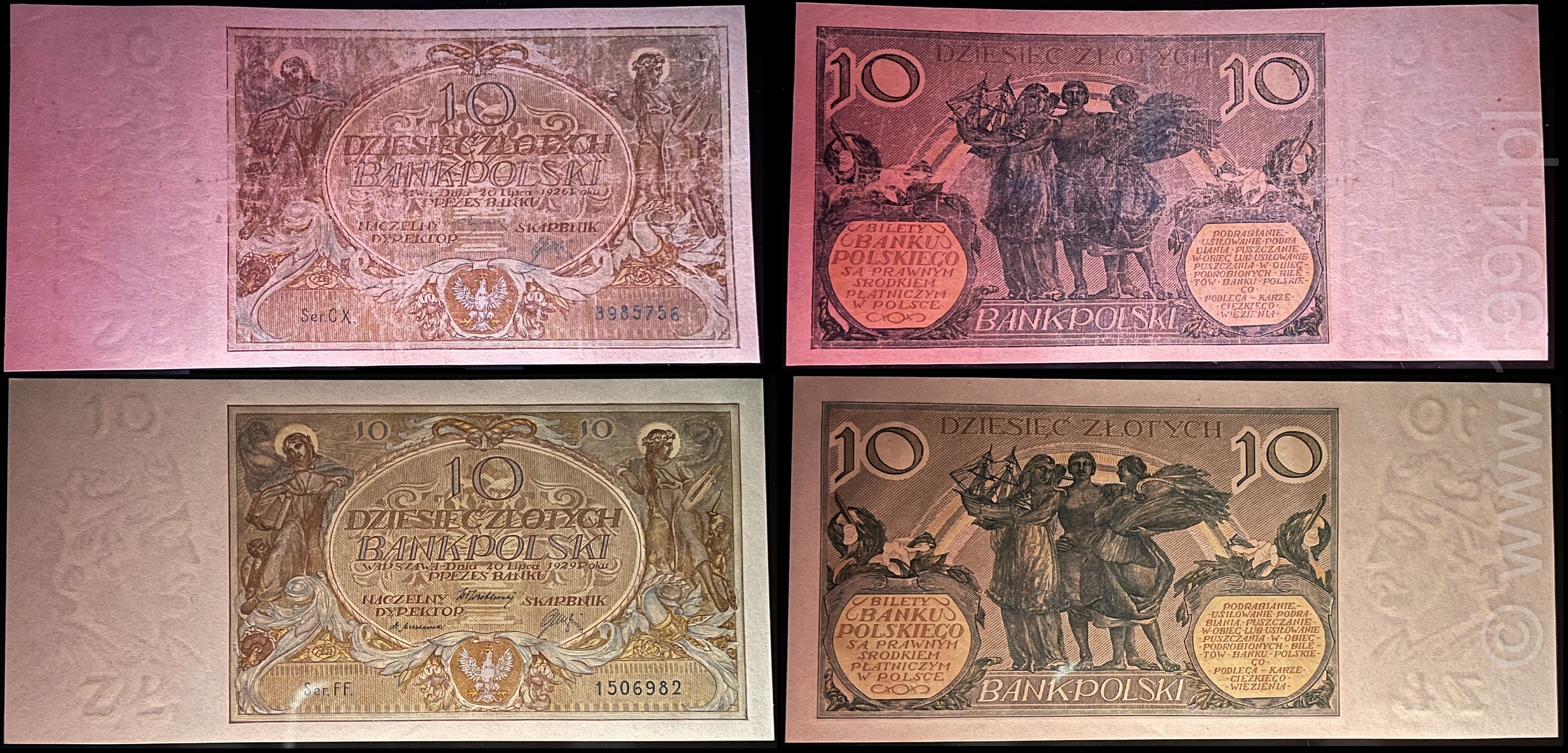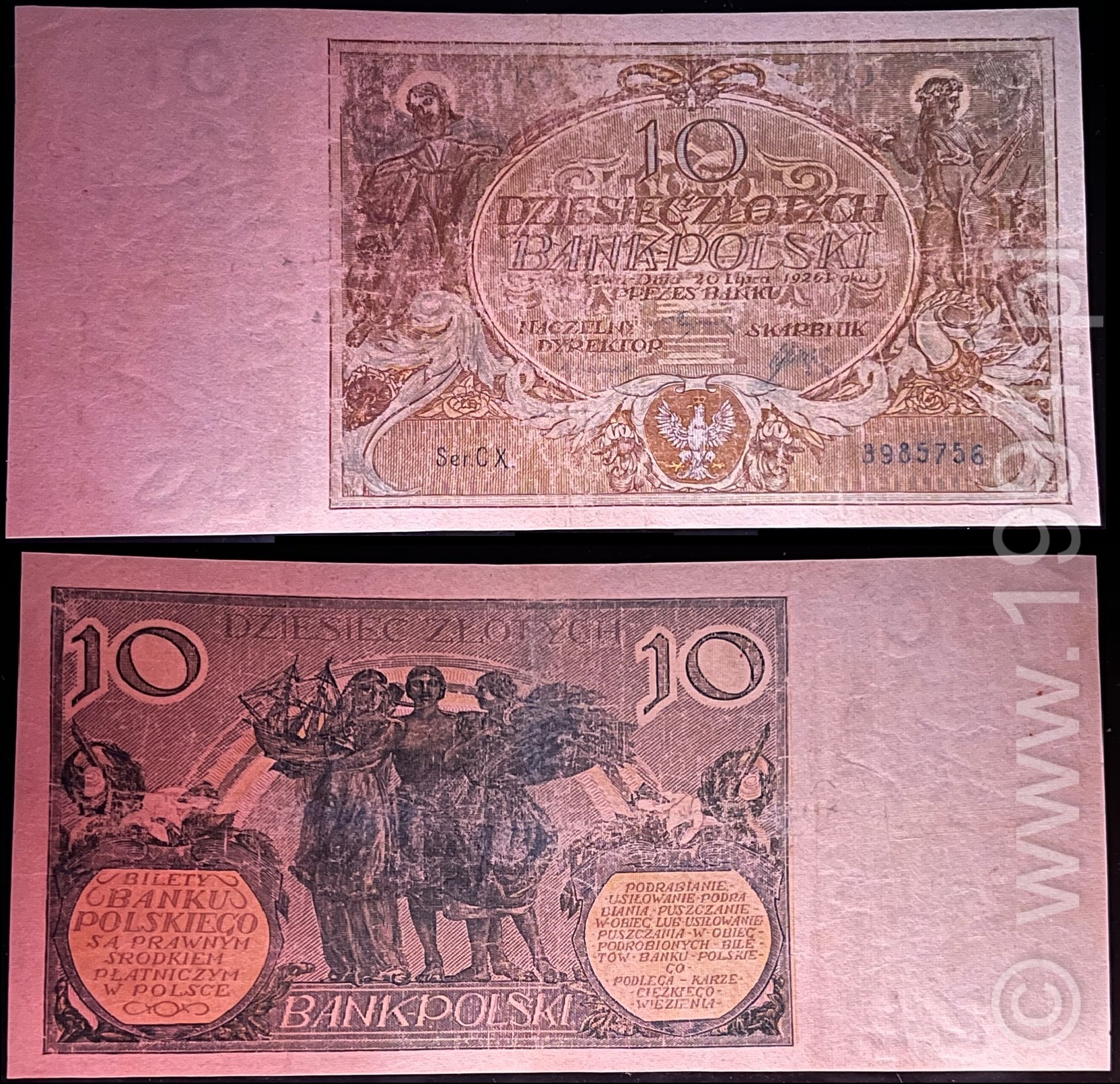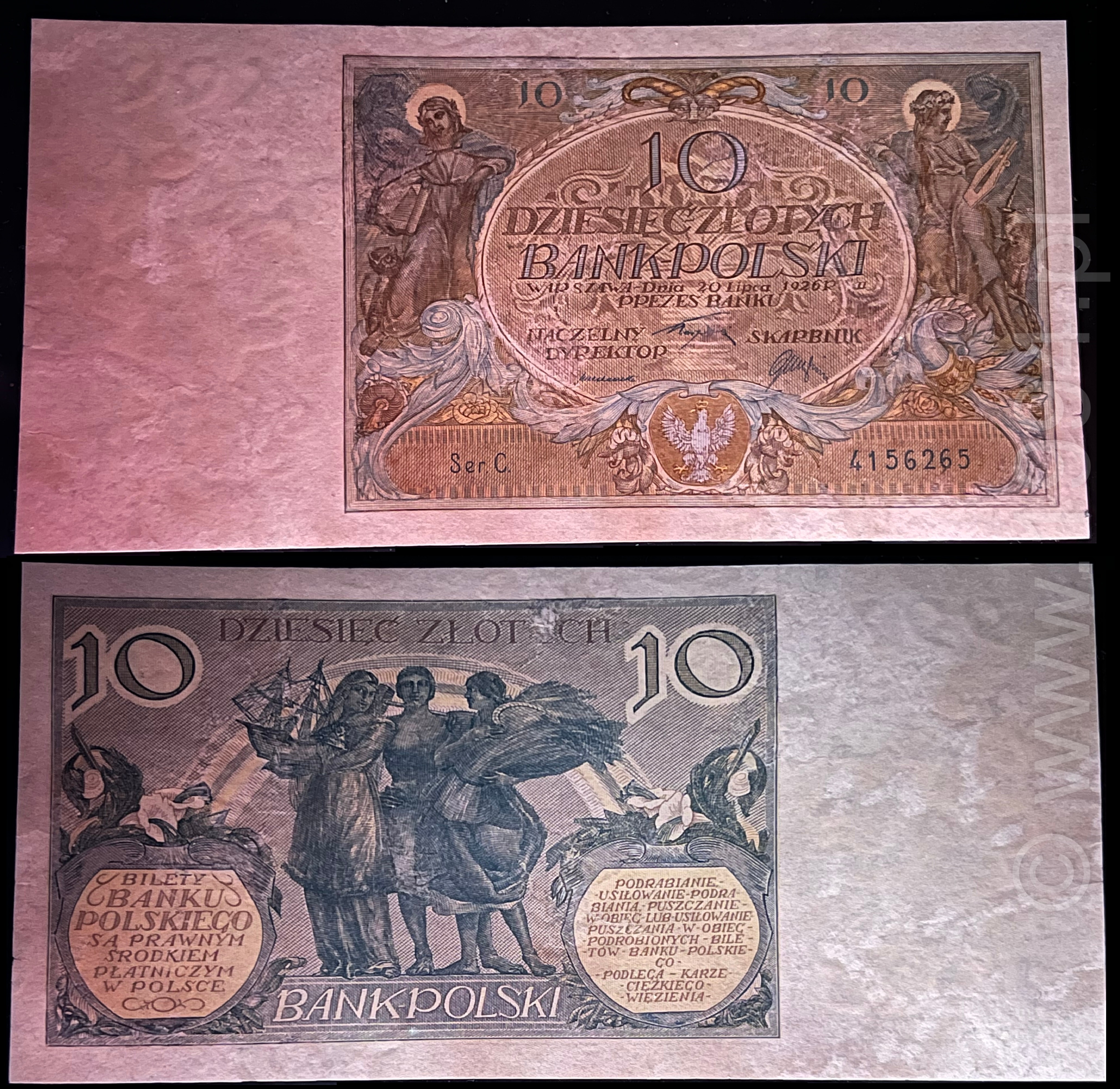Collection
AboutWhen Restoration Fails – A Case Study of Surface and Pigment Damage on the 1926 Bank Polski 10 Zlotych

This technical note compares three observable conditions on Bank Polski 10 Zlotych (1926 design): a properly restored rare watermark example, an over-restored regular watermark with visible surface and pigment loss, and unaltered reference pieces. The goal is diagnostic — to show how treatment affects ink, paper surface, and watermark presentation, without speculating on exact chemicals or methods.




Diagnostic checklist: restoration vs over-restoration
- Ink surface: proper restoration preserves intaglio ridge and subtle gloss; over-restoration yields matte, powdery areas and bald patches.
- Tonal continuity: mid-dark fields should grade smoothly; chemical stripping creates uneven, speckled lightening.
- Paper feel: natural stiffness has spring; re-sized or over-pressed paper feels board-stiff with dead snap.
- Watermark clarity: gentle washing does not sharpen watermarks; harsh baths do not improve them and may disturb fibers.
- Edge behavior: original edges show micro-burr; heavy pressing rounds or burnishes them unnaturally.
Takeaway. Correct conservation can stabilize and present a historic note without sacrificing ink or paper character. Over-restoration permanently removes pigment binders and flattens relief, leaving a piece that looks cleaner but reads wrong under light. Use graded originals as controls when assessing treated notes.